Toronto Pearson International Airport is Canada’s biggest airport. In 2011, 33.4 million guests walked through its doors on 428,000 aircraft movements and its goal is to increase its presence as Canada’s main airport and to increase its role as an international hub. To realise this vision of making Toronto Pearson a true global hub, it is focussing on the specific steps required to better meet customers’ needs.
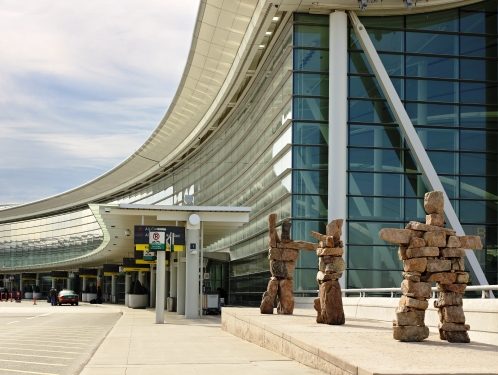
“As we provide millions of travellers with their first and last impressions of our region, we must make every effort to ensure a smooth, relaxing travel experience. That starts with developing new services to help guests move more efficiently and comfortably through our facilities,” said Pamela Griffith-Jones, Vice President, Chief Marketing and Commercial Officer, Toronto Pearson International Airport.
According to Ms Griffith-Jones all efforts to refine the Toronto Pearson experience are guided by the people who know it best: its guests, who provide feedback via surveys, focus groups and other communications channels. “Our guests’ priorities are clear: they expect us to provide a safe, secure environment where they can get where they need to go quickly and easily, supported by the highest standards of service. Our job is to meet and exceed those expectations while also ensuring that people feel comfortably at home in our airport,” she added.
In addition to helping guests move efficiently through Toronto Pearson, the airport’s management are placing more emphasis than ever on the quality of the airport experience. From the moment people enter its terminals, it is working to create a friendly, relaxed environment in which every detail is designed to help ensure they’re comfortable.
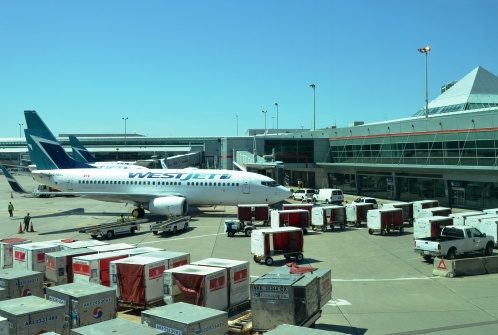
“Leisure travellers departing for points around the globe should feel that their vacations are already underway as they walk through our doors. Business travellers should have the freedom to stay connected or disengage and unwind. And all guests arriving on inbound flights should feel a genuine sense of welcome,” said Ms Griffith-Jones.
A pillar of the new Toronto Pearson brand is a focus on providing friendly, helpful service. In 2011 it opened several Guest Service Centres where representatives trained by Tourism Toronto assisted newly arrived visitors and offered support to all travellers. Guest Service Representatives can also be reached 24 hours a day through a special telephone help line. “We’re constantly reassessing every aspect of Toronto Pearson to see how we can make guests’ time even more enjoyable while respecting their desire to see value for money,” said Ms Griffith-Jones.
Having introduced free Wi-Fi access in 2010, it has now placed charging stations throughout both terminals so guests can refresh their laptops and handheld devices before boarding flights. It has also introduced electronic printing kiosks that can instantly reproduce documents from any smartphone, tablet or laptop equipped with a mobile printing app. “At this stage in Toronto Pearson’s history, ensuring that guests feel appreciated and well looked after is not a wish-list item; it’s the number one reason we’re in business,” added Ms Griffith-Jones.
Through regular dialogue with Toronto Pearson’s airline customers, the airport is deepening its understanding of their key business goals – from maintaining optimum capacity amidst fierce competition to building passenger loyalty with better service.
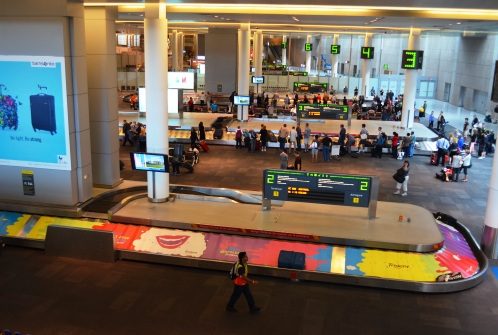
“The strength of our offer to airlines reflects the confidence that comes from successfully serving one of the world’s great cities – economically vibrant, culturally diverse and ideally situated at the heart of the continent. Carriers know they can count on Toronto Pearson to deliver high volumes of air travelers,” said Ms Griffith-Jones.
The push to make the airport as efficient as possible is improving every area of operations, with the result that guests connecting through Toronto Pearson can ultimately reach their destinations faster than through many other North American hubs. Even when winter weather hampers travel, it says it can keep more flights coming and going because snow-clearance times have been cut in half – setting a new standard for the industry.
“At a broader strategic level, we know that our massive infrastructure investment in the mid-2000s, while daunting at the time, is precisely what now gives Toronto Pearson a significant edge over competing hubs. It’s this fundamental advantage that will enable us to create a new kind of airport delivering the best possible guest experience,” said Ms Griffith-Jones.
At the same time, the airport’s drive for operational excellence yields dividends today: In 2011 Toronto Pearson announced a 2.5 per cent reduction in aeronautical fees for 2012. It has reduced or maintained rates and charges to air carriers in each of the past five years. “These are the financial incentives our carriers need, so they in turn can offer greater value and more flexible choices to their customers,” explained Ms Griffith-Jones.
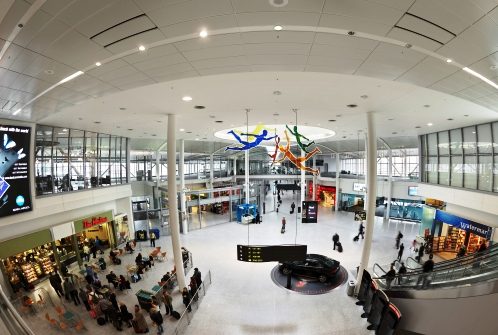
The pursuit of an increasingly customer-centric strategy at Toronto Pearson brings direct and indirect economic benefits to the Greater Toronto Area, to Southern Ontario and indeed to all of Canada. The introduction of additional retail, dining and other services translates into direct employment for residents of surrounding communities, as well as indirect job gains across the network of suppliers required to support those new amenities. Moreover, as the airport works to attract both guests and carriers – whether flying in and out of the region or passing through Toronto Pearson as a continental gateway – the increase in traffic brings a further boost to the regional economy. From limo services and restaurants to hotels and tourist attractions, countless businesses thrive as the volume of air travellers grows.
At the same time, as an emerging global hub Toronto Pearson links Canada’s business community to the world. Whether companies are exploring new markets, arranging sources of supply or tapping into valuable expertise, the airport is vital to business growth. It becomes the doorway to a manufacturing plant halfway around the globe – the venue for a critical meeting with foreign investors – the delivery counter for a high-tech component flown in from overseas. “Every day, through countless connections, Toronto Pearson adds further proof to the conclusions of economic research: communities served by flourishing international airports enjoy higher employment and greater overall prosperity,” explained Ms Griffith-Jones.
In developing the strategic plan for 2011 through 2015, the airport rigorously analysed the potential economic impact of evolving Toronto Pearson into a true global hub. By working to expand regional, national and global connections, and by offering more frequent non-stop flights to a broader range of destinations, Toronto Pearson could be serving an additional 6 million guests annually by 2015, according to the study. In addition, the volume of connecting passengers may increase by more than 10 percentage points, it says, a level of growth that is expected to drive a dramatic increase in capital expenditures, along with the creation of new airport-related jobs.
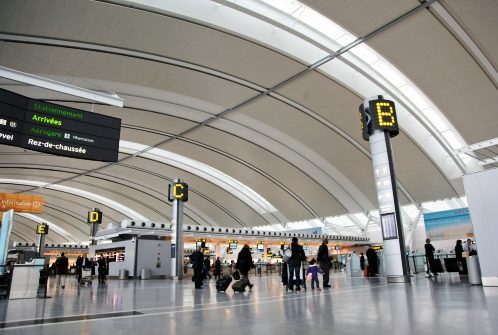
For Toronto Pearson’s air carriers, service providers and other partners – and for businesses in nearby communities and across the country – the gains it sees on the horizon can translate into measurable and sustainable economic growth. Toronto attracts tourists from around the globe, both as a destination in its own right and as the starting point for further explorations. The city’s cultural calendar includes high-profile annual events such as the Toronto International Film Festival (TIFF) and Pride Week, as well as many one-time exhibitions, shows and competitions. For all of these, Toronto Pearson plays a critical role in attracting visitors to the region. “We also have deep experience in handling the specialized needs of event organizers, whether it’s a museum bringing rare artifacts through Customs or a racing team seeking a logistics company to transport high-performance cars,” highlighted Ms Griffith-Jones.
Toronto Pearson is also a gateway for attractions across Ontario, from theme parks and art galleries to whitewater rivers and lakeside resorts. Especially for overseas tourists, the presence of a global airport on the province’s doorstep is the key to turning travel dreams into realities. The importance of Toronto Pearson as a catalyst for tourism is framed by the airport’s larger role as the key connection point for one of the world’s most culturally diverse cities. Among the 10 million international travellers passing through its terminals each year, many are Canadians heading abroad to revisit their countries of origin. By the same token, many international visitors fly into Toronto to visit Canadian friends and relatives. The airport is certainly the crossroads of a dynamic, constantly growing multicultural community.
The tables below highlight the top ten destinations and ten largest operators from Toronto Pearson International Airport by seat capacity this month and compare it with the same month last year.
|
SCHEDULED AIR SERVICES FROM TORONTO PEARSON INTERNATIONAL (non-stop departures; September 2012) |
|||||
|
Rank |
Airline |
Flights |
Seats |
% Capacity |
% Change (2011) |
|
1 |
Air Canada (AC) |
10,307 |
1,046,767 |
57.2 % |
2.5 % |
|
2 |
WestJet Airlines (WS) |
2,355 |
324,054 |
17.7 % |
7.3 % |
|
3 |
Air Transat (TS) |
208 |
56,814 |
3.1 % |
(-16.4) % |
|
4 |
ExpressJet Airlines (XE) |
751 |
42,506 |
2.3 % |
New Entrant |
|
5 |
American Eagle (MQ) |
563 |
38,183 |
2.1 % |
(-11.0) % |
|
6 |
American Airlines (AA) |
235 |
37,600 |
2.1 % |
14.1 % |
|
7 |
Pinnacle Airlines (9E) |
558 |
29,018 |
1.6 % |
35.8 % |
|
8 |
Sunwing Airlines (WG) |
161 |
27,475 |
1.5 % |
75.1 % |
|
9 |
KLM Royal Dutch Airlines (KL) |
60 |
16,805 |
0.9 % |
10.2 % |
|
10 |
Lufthansa (LH) |
52 |
15,082 |
0.8 % |
20.3 % |
|
(Others) |
1,320 |
195,777 |
10.7 % |
(-25.0) % |
|
|
TOTAL |
16,570 |
1,830,081 |
- |
2.0 % |
|
Source: OAG Analyser
|
SCHEDULED AIR SERVICES FROM TORONTO PEARSON INTERNATIONAL (non-stop departures; September 2012) |
|||||
|
Rank |
Destination |
Flights |
Seats |
% Capacity |
% Change (2011) |
|
1 |
Montreal Pierre Elliott Trudeau International (YUL) |
848 |
118,503 |
6.5 % |
(-5.0) % |
|
2 |
Vancouver International (YVR) |
702 |
117,731 |
6.4 % |
2.7 % |
|
3 |
Calgary International (YYC) |
635 |
91,143 |
5.0 % |
3.2 % |
|
4 |
Ottawa Macdonald Cartier International (YOW) |
688 |
78,623 |
4.3 % |
(-6.4) % |
|
5 |
New York LaGuardia (LGA) |
826 |
77,857 |
4.3 % |
42.9 % |
|
6 |
Halifax International (YHZ) |
460 |
63,083 |
3.4 % |
7.2 % |
|
7 |
Edmonton International (YEG) |
444 |
58,486 |
3.2 % |
0.0 % |
|
8 |
London Heathrow (LHR) |
209 |
51,926 |
2.8 % |
4.5 % |
|
9 |
Winnipeg International (YWG) |
382 |
46,715 |
2.6 % |
(-7.2) % |
|
10 |
Chicago O’Hare International (ORD) |
554 |
41,130 |
2.2 % |
(-5.1) % |
|
(Others) |
10,822 |
1,084,884 |
59.3 % |
1.7 % |
|
|
TOTAL |
16,570 |
1,830,081 |
- |
2.0 % |
|
Source: OAG Analyser
** FOR MORE INFORMATION ON TORONTO PEARSON INTERNATIONAL AIRPORT PLEASE VIEW THE AIRPORT'S ROUTE EXCHANGE PROFILE **





